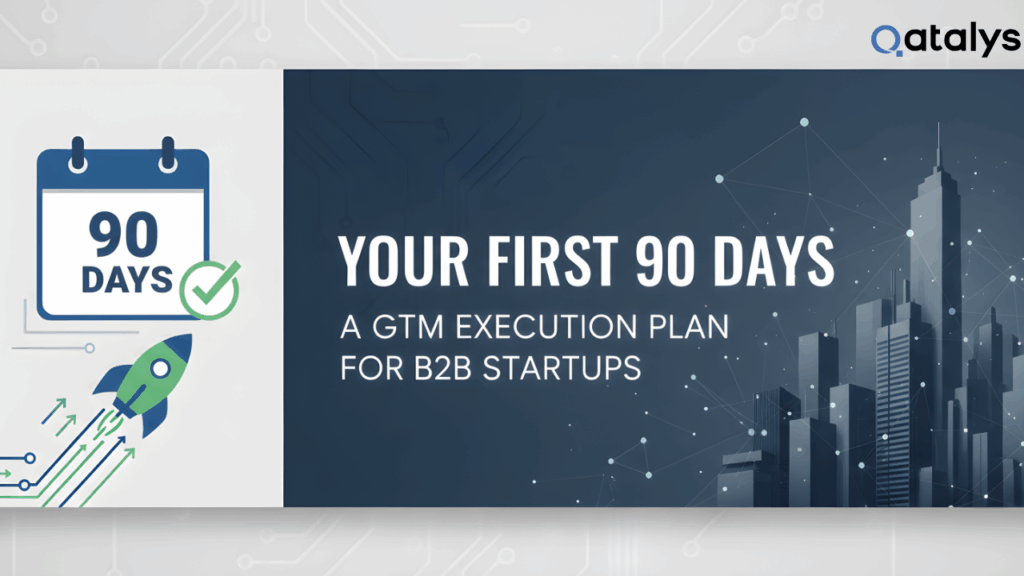How to Validate a Startup Idea and De-Risk Your Product Launch: A Step-by-Step Framework
Launching a new product can be a thrill, but there’s a risk that keeps founders up at night: building something nobody wants. The numbers paint a sobering picture. Around 90% of startups don’t survive past five years, and 42% cite “no market need” as the main cause for failure. These lessons have repeated across decades and industries, from ambitious CPG brands to tech ventures chasing the next big thing. Avoiding these pitfalls comes down to one essential skill: validation.
You don’t need clairvoyance to see into the market’s future. What you do need is a systematic process for testing assumptions, measuring real interest, and letting evidence. Not ego. Drive your decisions. In this guide, we’ll break down every actionable step to validate your business idea, sidestep costly mistakes, and launch what the market is actually craving.
The Real Cost of Skipping Validation
Stories abound of promising startups running headlong into the wall of market indifference. Take the classic examples: tech companies building solutions in search of problems, wellness products without clear differentiation, even well-funded ventures that overlooked customer pain points. Recent data shows that spending three times longer on validation is not wasted time but an investment in enduring traction.
Skipping this due diligence can mean joining the 34% of businesses that never find product-market fit or the early-stage teams in the 20% who face failure within their first year. Understanding these common startup pitfalls before they derail your venture is crucial for long-term success.
So, what separates those who thrive from those who quietly close shop? The answer is a smart, hands-on approach to market validation. One that combines tools, tactics, and a mindset of learning before building.
Crafting Testable Hypotheses That Guide Research
Every great validation process starts with a hypothesis. A clear, testable statement about your customer, their pain, and your unique solution. Vague assumptions like “most users will want this” set you up for trouble. Instead, strong hypotheses are specific, measurable, and directly tied to the critical risks in your idea.
Consider breaking down your core value proposition into smaller, focused hypotheses:
- Problem Hypothesis: Are potential customers actually experiencing the problem you want to solve?
- Customer Segment Hypothesis: Which specific group feels this pain most acutely?
- Value Proposition Hypothesis: Will your solution significantly improve their situation?
- Behavioral Hypothesis: Are customers willing to change current habits, switch providers, or pay for your solution?
For each, precise language drives relevance. For example: “30% of small business owners struggle weekly with invoicing delays, and will pay at least $29/month for automated solutions.” This statement can be tested. And disproved or validated. Early in your process.
Customer Discovery: Getting Real Feedback Early
Now that you’ve framed clear hypotheses, it’s time to test them with the people who matter. Actual customers. Start with direct conversations, aiming to uncover not just what users say, but how they behave.
Here are sample questions proven to surface valuable insights:
- How do you currently manage [problem]?
- What’s the hardest part about that process?
- Can you remember the last time this issue affected your work?
- What solutions have you tried, and what worked (or didn’t)?
- How do you decide to invest in new tools or services?
Leave space for the interviewee to guide the conversation. Probe for stories, frustrations, and workarounds. Notice body language and tone. Verbal and nonverbal cues often reveal priorities your questions might miss.
Once you’ve spoken with several potential customers, patterns begin to emerge. Do they express urgency? Would they actually pay for your solution, or is the pain only mild annoyance? Resist the urge to pitch. Instead, listen deeply and revise your assumptions based on real feedback.
Running a Smoke Test: Quantifying Real Demand
Once you’ve collected feedback and refined your hypotheses, it’s time to gauge larger-scale interest with a “smoke test.” Think of this as your first experiment in the wild. With today’s no-code tools, building a clean landing page can take just hours.
Start by crafting a landing page that explains your core value proposition and encourages visitors to sign up or express interest. Targeted pay-per-click (PPC) ads can drive traffic to your page and help you reach your ideal segment.
Key Steps for Running an Effective Smoke Test
- Build a Landing Page: Use platforms like Unbounce, Webflow, or Carrd to quickly create a compelling online presence. Focus copy on the problem and the promise of your solution. Don’t try to oversell.
- Design Clear Calls to Action: Invite users to join a waitlist, request early access, or schedule a demo. The goal is to see who is genuinely interested.
- Deploy Targeted Ads: Use channels like Google Ads, LinkedIn, or social media to put your offer in front of relevant audiences.
- Measure Conversion and Engagement: Track metrics such as click-through rates, sign-ups, bounce rates, and time on page. A high bounce and low sign-up rate signals a weak value proposition or targeting that needs adjustment.
Iterate with small changes, using what you learn to update your message, design, or even your foundational hypothesis. After all, low friction testing beats long months of building the wrong product. For deeper insights into proven validation tactics, consider implementing multiple testing strategies simultaneously.
Competitor Analysis and Market Sizing: Testing the Bigger Picture
Validating market demand doesn’t stop with positive signals on your landing page. Take a strategic look outward: Who else is solving your target problem? What’s the size of the opportunity, and where do you fit?
Proven Steps for Market and Competitor Research
- Map the Competitive Landscape: Use tools like SWOT analysis, strategic group analysis, or Porter’s Five Forces to categorize both direct and indirect competitors. Identify existing solutions, their strengths, weaknesses, customer segments, and market share.
- Evaluate Market Positioning: How do your competitors describe their offer? What are their pricing models, and which channels are working for them?
- Estimate Total Addressable Market (TAM): Gather industry reports and public data to calculate your potential customer base. Then, get more granular: What portion can you realistically reach in the next one to three years?
- Find the White Space: Look for gaps. Underserved segments, unique pain points, or outdated approaches. Where your value proposition feels truly distinct.
This research does more than verify viability. It refines your positioning, steers product decisions, and can even become a powerful story when pitching investors or partners.
Turn Findings into a Clear Go/No-Go Decision
All your research pays off when it’s time to make a call. Move forward, pivot, or walk away. A weighted validation scorecard transforms gut feel into structured decision-making.
Here’s how it works:
Build and Use a Weighted Validation Scorecard
First, list the most critical assumptions for your startup. Problem existence, solution appeal, willingness to pay, market size, and differentiation. Assign a weight to each, reflecting its impact on your business’s success. For example, willingness to pay might get 30%, problem frequency 25%, and market size 15%.
Then, rate your findings for each factor on a consistent scale (say, 1-5). Multiply scores by their weights and total the result. This approach gives you a quantified confidence level. If your total falls short of a pre-determined threshold, it’s time to rethink or pause further investment.
Regularly re-visit this scorecard as you validate new aspects or respond to changing feedback. The discipline of scoring breaks bias, clarifies next steps, and ensures you build resilience into your process. Not just enthusiasm.
Summary and Next Steps
Every successful product launch starts with a willingness to validate, test, and listen. By following this step-by-step framework. Hypothesis creation, deep customer discovery, data-driven smoke tests, thorough market sizing, and a structured scorecard. You dramatically increase the odds of finding real demand and achieving product-market fit.
At Qatalys, we specialize in guiding startups and enterprises through every phase of innovation. From market validation to scalable technology delivery. Whether you’re an ambitious founder or a Fortune 1000 leader, adopting a disciplined approach to validation lets you launch with confidence, not guesswork.
Ready to turn your next idea into a proven market opportunity? Connect with Qatalys for tailored venture studio services that help you innovate, scale, and grow.
Frequently Asked Questions
What is market validation, and why is it crucial for startups?
Market validation is the process of confirming that there’s genuine demand for your product or service before investing heavily in development. Testing your assumptions early helps you avoid building something no one wants and reduces the risk of failure.
How many customer interviews should I conduct before making product decisions?
Aim for at least 10 to 20 conversations with people from your target segment. Continue until you notice recurring patterns in their answers. This helps ensure your findings aren’t based on outliers.
What’s the best way to run a smoke test quickly?
Use a simple no-code landing page with a clear call-to-action, and drive targeted traffic through paid ads. Measure actual engagement. Like sign-ups or demo requests. To determine real interest.
How do I know if my startup idea is ready for launch?
If your validation scorecard indicates strong support (with positive ratings for market demand, solution fit, and willingness to pay), and your data from interviews and tests highlights repeatable interest, these are strong signals that you’re ready to build.








